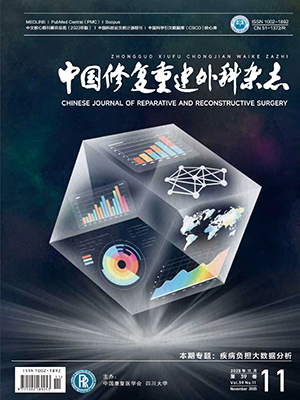Objective To measure the included angle between tibia anatomical axis and anterior cortex, and to define the relative position of them in order to give direction in placement of tibia extra-medullary alignment bar during total knee arthroplasty. Methods A total of 100 healthy volunteers were included (49 left knees and 51 right knees). There were 52 males and 48 females, aged 20-86 years with an average age of 45.2 years (20-35 years in 29 cases, 35-50 years in 32 cases, and over 50 years in 39 cases). The tibiofibular lateral X-ray films were taken to measure the included angle between tibia anatomical axis and anterior cortex with AutoCAD2004 system. The samples were grouped according to gender, age, and side. Results The included angles between tibia anatomical axis and anterior cortex ranged from 3.007 to 3.021° with an average of 3.001°; the angles were (2.965 ± 0.361)° in male and (3.041 ± 0.311)° in female; the angles were (2.996 ± 0.332)° in the left knee and (3.006 ± 0.347)° in the right knee; and the angles were (2.918 ± 0.346)° in 20-35 years age group, (3.060 ± 0.330)° in 35-50 years age group, and (3.014 ± 0.336)° in over 50 years age group. No significant difference was found in the included angle between tibia anatomical axis and anterior cortex between male and female, among different ages, and between left and right knees (P gt; 0.05). Conclusion The included angle between tibia anatomical axis and anterior cortex is about 3°, so tibia extra-medullary alignment bar should be placed at the angle of 3° with anterior cortex during total knee arthroplasty.
Citation: JIANG Wei,LUO Wei,ZHANG Fangjie,GAO Shuguang,XU Mai,ZENG Chao,LEI Guanghua.. MEASUREMENT STUDY ON INCLUDED ANGLE BETWEEN TIBIA ANATOMICAL AXIS AND ANTERIOR CORTEX IN ADULTS. Chinese Journal of Reparative and Reconstructive Surgery, 2013, 27(6): 670-672. doi: 10.7507/1002-1892.20130149 Copy
Copyright ? the editorial department of Chinese Journal of Reparative and Reconstructive Surgery of West China Medical Publisher. All rights reserved




